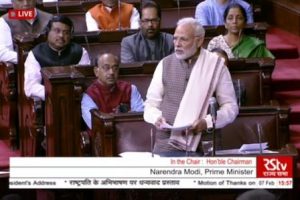Hate Crime in India: Reading the Supreme Court Order on Tehseen Poonawalla
The Court Order on Tehnseen Poonawalla failed to place mob lynching within a specific paradigm. The resultant thematic ambiguity around the nature of violence renders the provided guidelines ineffective in the context of systemic and institutional biases.
An ethnographic research conducted in the three states of Haryana, Rajasthan and Uttar Pradesh by Mohsin Alam Bhat and he investigates the outcomes of the Tehseen Poonawalla order (Tehseen S. Poonawalla v. Union of India & Others, 2018) on police operations. Bhat argues that the order should have located the nature of violence in a specific paradigm for proper interpretation and implementation. He suggests a hate crime approach can effectively deal with criminal acts of mob lynching and violence. Placing his investigation within this approach, instead of an implementation versus non-implementation framework, Bhat’s research examines systemic biases emphasising the lack of an institutional meaning of lynching and mob violence in police operations. He concludes that police discretion renders the Supreme Court order ineffective even in places where it is implemented. Further, Bhat proposes that any meaningful legal reform should be based on the hate crime paradigm accounting for institutional and social biases.
(Tehseen S. Poonawalla v. Union of India & Others, 2018) on police operations. Bhat argues that the order should have located the nature of violence in a specific paradigm for proper interpretation and implementation. He suggests a hate crime approach can effectively deal with criminal acts of mob lynching and violence. Placing his investigation within this approach, instead of an implementation versus non-implementation framework, Bhat’s research examines systemic biases emphasising the lack of an institutional meaning of lynching and mob violence in police operations. He concludes that police discretion renders the Supreme Court order ineffective even in places where it is implemented. Further, Bhat proposes that any meaningful legal reform should be based on the hate crime paradigm accounting for institutional and social biases.
Hate Crime Paradigm and the Supreme Court Order
Bhat highlights that the thematic ambiguity in the SC order fails to capture the systemic biases and social hierarchies embodied in the act of mob lynching. It also neglects the inequalities already present in social and political processes. The judgement is rendered ambiguous because it outlines not one but three paradigms, which are: a) violence as an irrational and passionate crime committed by a frenzied mob; b) violence as vigilantism that also threatens state monopoly over violence; and c) discriminatory violence that takes into account the social context of sectarian violence.
Another problem is that the migration and integration of the international standards of hate crime approach, which are becoming part of the transnational human rights regime, to a local context are difficult because of inconsistent institutional acknowledgement. And adherence to the hate crime approach in operational responses is unfathomable without a clear articulation in legislative frameworks.
The Tehseen Poonawalla order is also one such instance where the judiciary failed to solidify this approach in the guidelines provided.
Also Read : OHCHR Petition in Indian Supreme Court on the CAA: Uncharted Usurpation by UN Body
The Indian Penal Code, 1860 (IPC) contains only one hate crime law: The Scheduled Castes and the Scheduled Tribes (Prevention of Atrocities Act), 1989. And the dismal implementation of this act is discouraging. India is a signatory of the International Convention on the Elimination of Racial Discrimination (ICERD), but a research paper by J. Perry has highlighted that India has failed to submit a periodic report to the Committee on the Elimination of Racial Discrimination (CERD) since 2010.
The migration and integration of the burgeoning international standards to the Indian context require accounting factors like socio-economic concerns, resources, cultural norms, and the legal system of the nation. For this, Perry proposes two solutions: a) the recognition of hate crime in legislative frameworks and institutions like the judiciary; and b) an active discourse around the issues by the media, civil society, and academia, as an ‘essential site of justice’. This approach tries to protect plurality and maintains equality by ensuring the equal application and protection of the rule of law to all communities. Beyond the acknowledgement and conceptual adaptation of the hate crime approach, it is vital to take steps like training police officials, establishing anti-discriminatory bodies, improving recording and reporting of hate crime, and providing victim support and compensation. The police remain at the frontline of such system-based approaches. In the Indian context, the quotidian exercise of police discretion hinders the implementation of the Tehseen Poonawalla guidelines.
Understanding Police Discretion
Bhat’s research highlights that police officials’ construction of mob lynching as a category invisiblises atrocities against minorities. Police discretion is constituted of the larger systemic biases or may, often, be motivated by negotiations with powerful groups of the region who may demand an outcome in their favour. The vagueness of definitions concentrates more power with the police officials in hate crime cases. This is where the significance of the recognition of hate crime as a category comes in. It can also be useful to look at other external factors like the role of political will and media reportage to understand how these factors might facilitate or hamper speedy redressal and victim protection.
 An ethnographic research conducted by Belur and others in 2015 highlighted how cases of dowry related deaths and injuries in Mumbai and Delhi were laden with police discretion even when the law does not provide for it. They traced police discretion at seven different investigation stages: receiving information and first response, recording the victim statement, the inquest, registering the FIR, collecting evidence, arrests the accused, and framing the charges. And their finding is that, although, the police officials claim a complete absence of discretion in this victim-friendly legislation, the officials applied considerable discretion to bring the case to fixed conclusions to strengthen the case of the prosecution. Or in some cases, they refrained from arresting when the perpetrators were old or where negotiations were possible.
An ethnographic research conducted by Belur and others in 2015 highlighted how cases of dowry related deaths and injuries in Mumbai and Delhi were laden with police discretion even when the law does not provide for it. They traced police discretion at seven different investigation stages: receiving information and first response, recording the victim statement, the inquest, registering the FIR, collecting evidence, arrests the accused, and framing the charges. And their finding is that, although, the police officials claim a complete absence of discretion in this victim-friendly legislation, the officials applied considerable discretion to bring the case to fixed conclusions to strengthen the case of the prosecution. Or in some cases, they refrained from arresting when the perpetrators were old or where negotiations were possible.
This research highlights the implicit tendency of discretion and also accentuates social complexities in such gendered medico-legal cases.
Also Read : Pakistan Quit Balochistan
There seem to be emerging two types of discretions both in the research of Bhat and Belur. One is embedded in the meaning-making process because of interpretive acts and subjectivities. And, the second is the more explicit discretion informed by negotiations and efficiency considerations. Both of these may be rooted in systemic and social biases. And the hate crime approach in the legislative framework can only address the first kind that arises from ambiguous interpretations. For checking the second kind of discretion reform beyond legislation is imperative. This can be in the form of setting up accountability systems. One method, suggested by J. Perry, is to put NGOs, which perform extensive data collection tasks, and the police in dialogue to establish a channel of accountability. Another crucial aspect would surely be to have more members of the communities who face such atrocities in leadership positions in the police and criminal justice machinery.
The Tehnseen Poonawalla order failed to place mob lynching within a specific paradigm. The resultant thematic ambiguity around the nature of violence renders the provided guidelines ineffective in the context of systemic and institutional biases. In the presence of such a lacuna, the gap is filled by police discretion. Mohsin Alam Bhat suggests that police discretion can be curbed through a hate crime approach that will allow for the legislative framework to address systemic biases. The acknowledgement of the discriminatory form of these atrocities is the first step. But this needs to be aided by further interventions to be effective. Along with more research and discussions on the socio-legal and cultural complexities in hate crime violence, other innovative methods to improve the recording and investigation of these crimes is vital. Better representation of these communities in the criminal justice machinery and creating cross-institutional networks and accountability systems are other potential interventions to be explored.
